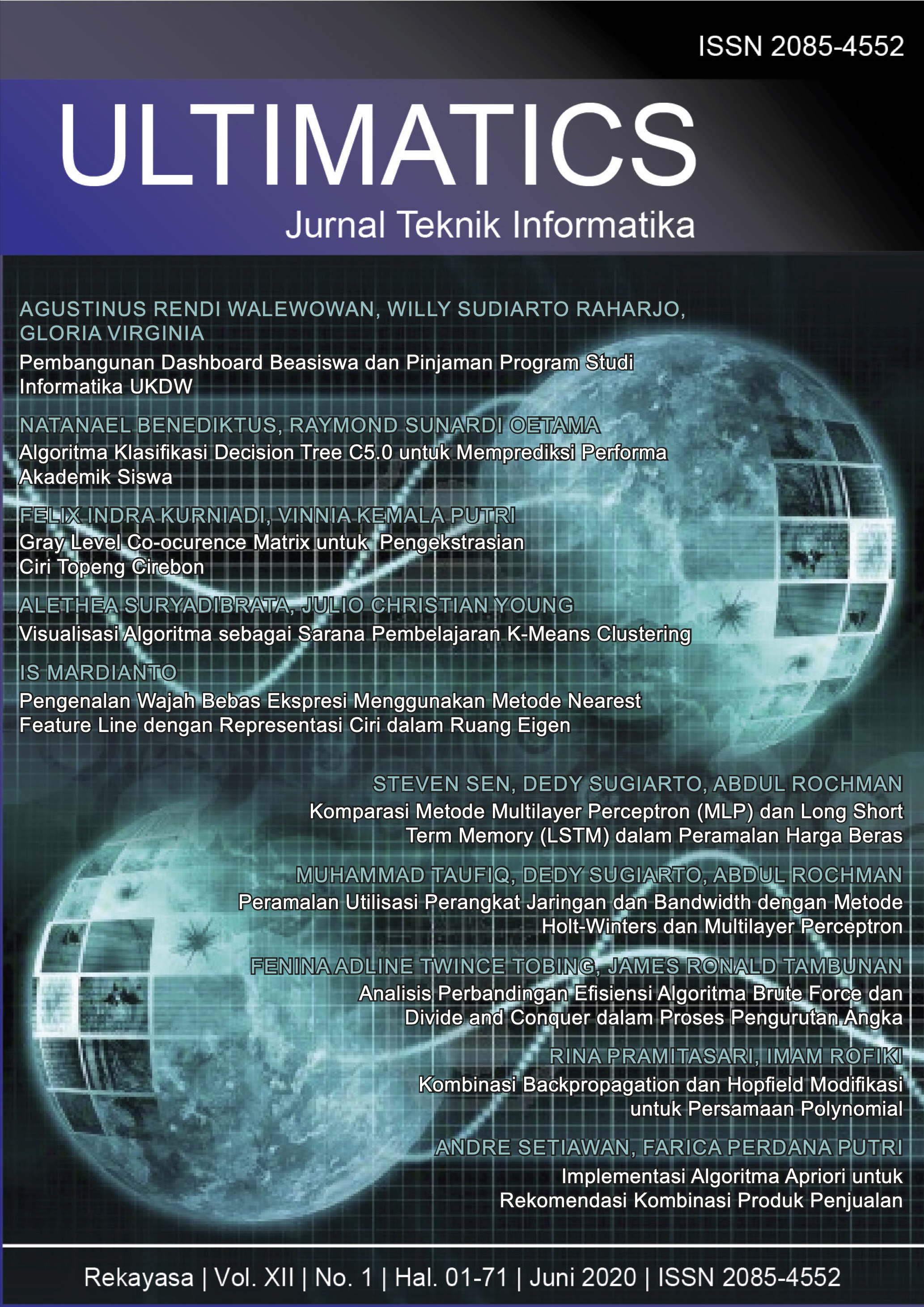Pembangunan Dashboard Beasiswa dan Pinjaman Program Studi Informatika UKDW
DOI:
https://doi.org/10.31937/ti.v12i1.1414Abstract
The head of the study program (kaprodi) has many tasks and responsibilities that must be done in academic activities. One of the tasks of the head of the study program is a report on the entire implementation of activities in a study program. For that, we need a system that can be used for daily operational activities and provide reports. A dashboard is an information panel display that is used in an organization to consider a problem making it easier for someone to make a decision. This study made a dashboard scholarship and loan design using the prototyping method. Prototyping is a software development method, which consists of a physical work system model and an initial version of the system.
(Ogedebe & Jacob, 2012). The results of the average task success testing in both iterations, namely 96.66 so that the system built can be said to be quite effective in displaying scholarship and loan information and easy to learn. Interface design evaluations were carried out using the System Usability Scale (SUS) for 5 respondents in each iteration and resulted in a SUS score of 75.2 in iteration I and 76.6 in iteration II. Based on these results, the average SUS score for both iterations is 75.9. Thus, the system interface is stated to be good with a grade scale of C value, adjective rating of Good value, and acceptability ranges are acceptable.
Downloads
Downloads
Published
How to Cite
Issue
Section
License
Authors retain copyright and grant the journal right of first publication with the work simultaneously licensed under a Creative Commons Attribution-ShareAlike International License (CC-BY-SA 4.0) that allows others to share the work with an acknowledgement of the work's authorship and initial publication in this journal.
Authors are able to enter into separate, additional contractual arrangements for the non-exclusive distribution of the journal's published version of the work (e.g., post it to an institutional repository or publish it in a book), with an acknowledgement of its initial publication in this journal.
Copyright without Restrictions
The journal allows the author(s) to hold the copyright without restrictions and will retain publishing rights without restrictions.
The submitted papers are assumed to contain no proprietary material unprotected by patent or patent application; responsibility for technical content and for protection of proprietary material rests solely with the author(s) and their organizations and is not the responsibility of the ULTIMATICS or its Editorial Staff. The main (first/corresponding) author is responsible for ensuring that the article has been seen and approved by all the other authors. It is the responsibility of the author to obtain all necessary copyright release permissions for the use of any copyrighted materials in the manuscript prior to the submission.















